2014
Type of resources
Available actions
Topics
Keywords
Contact for the resource
Provided by
Years
Formats
Representation types
Update frequencies
Service types
Scale
Resolution
-
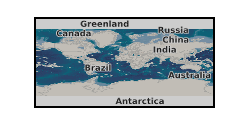
Measurement and monitoring of CO2 flows across the entire CCS chain are essential to ensure accurate accounting of captured CO2 and help prevent leaking during transportation to and from storage sites. This particular R&D need has been identified as one of the highest priority areas in the latest APGTF Strategy Report and in the UKCCSRC RAPID Handbook as well as in a recent study by NEL. The need for addressing measurement uncertainty and its importance for CO2 flows is a key factor in the CCS chain. The accurate measurement of CO2 is also vital to lift the strict regulations from legislative bodies off the full deployment of CCS and create a more positive public perception towards CCS. In addition, it is imperative to investigate the flow metering aspects of CO2 to inform the legislators and regulators and to have this underpinning knowledge available to the providers of the design, build and operation of CCS plants. In this project a cutting-edge technology for the measurement of CO2 flows in CCS pipelines will be developed. The technology will incorporate multi-modal sensing and statistical data fusion techniques. General-purpose flow sensors, including Averaging Differential Pressure, ultrasonic and Coriolis together with temperature, pressure and electrical impedance transducers, will be utilised to create a prototype multi-modal sensing system. A statistical data fusion method based on Bayes' rule for combining prior and observation information will be developed to integrate the outputs of the sensors and transducers. Various statistical data fusion models will be developed off-line and optimal data fusion models will be selected for on-line implementation. Meanwhile, a dedicated CO2 mass flow reference platform will be built using precision weighing techniques and its uncertainty will be established. Extensive experimental work will be conducted on the CO2 mass reference platform after implementing the on-line statistical data fusion models. The multi-modal sensing system will then be extensively tested under controlled flow conditions which resemble practical CCS conditions. The measurement uncertainty for each selected data fusion model will be reported together with the implication of costs, which will be a very informative source for users, manufacturers and researchers. Finally, the multimodal sensing system will be scaled up with the support of the industrial partner and evaluated on their large line (>DN250) flow test facility under simulated flow conditions. Effects of impurities in the CO2 flow on the performance of the flow measurement system will also be studied. Findings from the project will be disseminated to the UKCCSRC and a wider community. Grant number: UKCCSRC-C2-218.
-
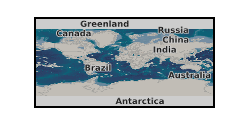
This project contributes significantly to the de-risking of a technology which has a significantly lower efficiency penalty than post-combustion capture using Monoethanolamine (MEA) scrubbing. The work here specifically targets two industrial sectors where MEA scrubbing is at a significant disadvantage (only ~ 30 % of the low-grade heat required for MEA scrubbing is present in a cement plant, for example [1]), and in both cases the spent CaO is valuable as an input to the process itself (either as the main feedstock for cement clinker production, or as a flux in iron production). The project builds on several current projects at both Imperial College and Cranfield University and offers excellent value for money because of these synergies. Grant number: UKCCSRC-C2-209.
-
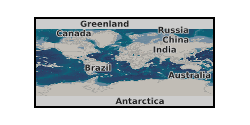
The aim of this project is to develop validated and computationally efficient shelter and escape models describing the consequences of a carbon dioxide (CO2) release from Carbon Capture and Storage (CCS) transport infrastructure to the surrounding population. The models will allow pipeline operators, regulators and standard setters to make informed and appropriate decisions regarding pipeline safety and emergency response. The primary objectives planned to achieve this aim are: 1.To produce an indoor shelter model, based on ventilation and air change theory, which will account for both wind and buoyancy driven CO2 ventilation into a building. The model will be capable of incorporating varying cloud heights, internal building divisions, internal and external temperature differences and impurities. 2.To create an external escape model that will determine the dosage received by an individual exposed to a cloud of CO2 outdoors. The model will be capable of incorporating multi-decision making by the individual in terms of the direction and speed of running, wind direction, the time taken to find shelter and the time required to make a decision, on becoming aware of the release. 3.To build a Computational Fluid Dynamics (CFD) model describing the effects of ingress of a CO2 cloud into a multicompartment building. 4.To validate the indoor shelter model and the CFD model against experimental test data for a CO2 release into a single compartment building. 5.To validate the indoor shelter model against further CO2 ingress scenarios modelled with CFD. 6.To conduct a sensitivity study using the shelter and escape models to calculate the dosage that an individual will be expected to receive under different conditions building height, window area, wind direction, temperature gradient, wind speed, atmospheric conditions, building size, running speed, direction of travel and reaction time. 7.To illustrate how the output from the models, in terms of dosage, can be used as input to Quantitative Risk Assessment (QRA) studies to determine safe distances between CO2 pipelines and population centres. 8.To demonstrate how the output from the models, in terms of dosage, can be used as input to the development of emergency response plans regarding the protection afforded by shelter and the likely concentrations remaining in a shelter after release. 9.To disseminate the findings of the research to relevant stakeholders through publication of academic journal papers as well as presentations at conferences, UKCCSRC meetings and relevant specialist workshops. Grant number: UKCCSRC-C2-179.
-

This dataset (1.5 GB) comprises SO2 emission data (SO2 camera and DOAS) of parts of the active 2013 phase from Colima, as well as Scanning electron microscope (SEM) images and microprobe data of the collected ash from explosions and lava and dome rock. These data were used in the following paper: Cassidy, M., Cole, P.D., Hicks, K.E., Varley, N.R., Peters, N., Lerner, A. 'Rapid and slow: Varying ascent rates as a mechanism for Vulcanian explosions' Earth and Planetary Science Letters. 420: 73-84. doi:10.1016/j.epsl.2015.03.025
-

Elemental and stable isotope data measured in Eocene foraminiferal calcite from Ocean Drilling Program Site 865 and Tanzanian Drilling Project Site 18 published in Edgar et al. (2015) "Assessing the impact of diagenesis on δ11B, δ13C, δ18O, Sr/Ca and B/Ca values in fossil planktic foraminiferal calcite" in Geochimica et Cosmochimica Acta, v. 166, p. 189-209. Table 1. δ18O and δ13C values for glassy and frosty foraminifera from TDP Site 18 and ODP Site 865, respectively. Table 2. Sr/Ca and B/Ca values, and test weights for glassy and frosty foraminifera from TDP Site 18 and ODP Site 865, respectively. Table 3. δ11B values for glassy and frosty foraminifera from TDP Site 18 and ODP Site 865, respectively.
-
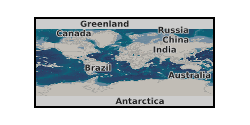
This poster on the UKCCSRC Call 2 project, Multiscale characterization of CO2 storage in the United Kingdom, was presented at the Cranfield Biannual, 21.04.15. Grant number: UKCCSRC-C2-197.
-
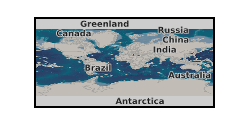
This presentation on the UKCCSRC (UK Carbon Capture and Storage Research Centre) Call 1 project, Multi-Phase Flow Modelling for Hazardous Assessment, was presented at the Cranfield Biannual, 22.04.15. Grant number: UKCCSRC-C1-07.
-
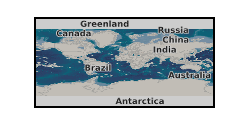
UKCCSRC Call 2 Project C2-189. The data, which was produced as a result of a UK CCSRC Call 2 funded project, consists of the GC-MS characterisation results for the products collected from the rejuvenation tests of degraded amine sorbents from carbon capture and related model degradation compounds. The examined amine-based sorbent samples included one heavily degraded industrial MEA solvent, one degraded solid-supported polyethyleneimine sample and 6 model MEA degradation compounds (N-(2-Hydroxyethyl)-ethylenediamine, glycylglycine, 2-Oxazolidinone, 1-(2-Hydroxyethyl)-2-imidazolidinone, 1-(2-Hydroxyethyl)-imidazole, N-Acetylethanolamine. Novel reductive approaches, which were investigated as a potential means for rejuvenating the degraded amine sorbents and where the samples for characterisation were produced, included catalytic hydrogenation, hydrous pyrolysis and hydropyrolysis with platinum, nickel and molybdenum as the catalysts used. The dataset also contains some preliminary CO2 absorption test results for a degraded MEA solvent before and after rejuvenation with hydrous pyrolysis using a continuous reactor. Full technical details of the research are contained in the final report submitted to UK CCSRC.
-

Pressurised Large Scale Generic Burner Tests With Oxygen, Air And Carbon Dioxide. Excel File. Testing Undertaken August 2014. Data Used Is Detailed In Report: Oxyfuel And Exhaust Gas Recirculation Processes In Gas Turbine Combustion For Improved Carbon Capture Performance. Final Report Including Combustion Testing Results. Grant number: UKCCSRC-C1-26.
-
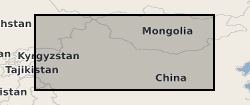
Files contain heavy mineral (HM) and framework petrography data for samples taken from sediments across Northern China, from Tarim in the west to Ordos in central north China. The data come from river, loess, silt and sand sediments from deserts, the Chinese Loess Plateau, major rivers and alluvial fans of ages spanning the Cenozoic to modern. Data are grouped into tables with sample details and data types. Each file pertains to a given paper: Stevens et al., 2013a: doi:10.1016/j.quascirev.2012.11.032 Stevens et al., 2013b: doi:10.1016/j.quascirev.2013.10.014 Bird et al., 2015: doi:10.1016/j.palaeo.2015.06.024 Nie et al., 2015: doi:10.1038/ncomms9511 Rittner et al., 2016: doi:10.1016/j.epsl.2015.12.036 Supplementary Material - Contains Hf, Nd and Sr isotopic data from modern, Pleistocene and Pliocene samples from surface and sediment section sediments from Northern China. Including loess, red clay, sandy desert, alluvial fan and river bar and terrace sediments. Samples obtained between 2010 and 2014.
 NERC Data Catalogue Service
NERC Data Catalogue Service